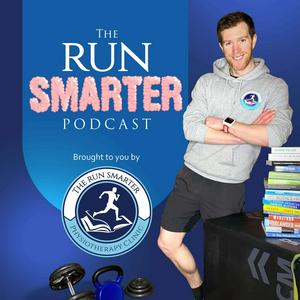Learn more about Brodie's Research Database & AI Assistant 📄🔍For MORE Run Smarter Resources 🏃♂️📚- Including Free Injury Prevention Courses 🩹🎓- The Run Smarter Book 📖- Access to Research Papers 📄🔍- & Ways to Work with Brodie 🤝👟👉 CLICK HERE! 🎉✨In this episode, Brodie Sharpe sits down with Sara to share her inspiring journey of overcoming Proximal Hamstring Tendinopathy (PHT) after struggling with it for several years. Sara's story is filled with ups and downs, from navigating misdiagnoses and passive treatments to discovering the power of strength training and the mind-body connection. Whether you’re currently battling PHT or looking for guidance on chronic pain, this episode offers valuable insights and hope.Episode Highlights:00:00 – Introduction to today’s episode and Sara’s success story00:33 – Background on Sara’s PHT journey and how it developed over the years01:07 – Sara shares the onset of her symptoms dating back to 200902:34 – The chronic resurgence in 2017 and the role of life transitions03:54 – Seeking treatment: from passive treatments to sports medicine05:49 – Ineffective treatments: PRP, dry needling, and acupuncture06:48 – Diagnosis of PHT and later gluteal tendinopathy08:15 – Attempting different procedures: Tenex, injections, and shockwave therapy09:43 – The mental and emotional toll of chronic pain10:41 – Finding Brodie’s podcast and beginning strength training12:18 – The importance of slow, heavy progressive strength training in recovery14:13 – Balancing treatment approaches and avoiding unnecessary interventions16:29 – Returning to running: overcoming fear and rebuilding confidence19:22 – A pivotal moment: discovering ‘Think Away Your Pain’ and the mind-body connection24:27 – The impact of personality traits on chronic pain and recovery27:53 – How stress and responsibility play a role in pain persistence31:36 – Understanding the emotional component of pain and its management34:27 – Key strategies for overcoming hypervigilance and overanalysis37:45 – How to shift treatment strategies when progress plateaus41:02 – Sara’s current status: running again and symptom management42:51 – Final advice for PHT sufferers and key takeawaysKey Takeaways: ✔ Passive treatments like PRP, dry needling, and injections may not provide long-term relief for PHT. ✔ Strength training, specifically slow, heavy progressive loading, is a crucial foundation for recovery. ✔ Addressing the mind-body connection can be a game-changer in managing chronic pain. ✔ Hypervigilance and fear of movement can perpetuate pain—learning to reframe these thoughts is essential. ✔ Recovery is a journey—adjusting your approach when progress stalls is key to success. ✔ Stress and personality traits (perfectionism, responsibility, self-criticism) can influence chronic pain.Resources Mentioned:Sara's email:
[email protected] Away Your Pain – David SchechterHealing Back Pain – Dr. John SarnoEmily's TMS InstagramDan’s YouTube Channel: Pain Free You


